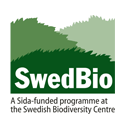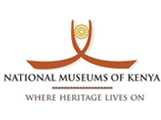Click on images to enlarge
/thumbs/tecoma_stans71_sml.jpg)
habit with immature fruit (Photo: Sheldon Navie)
/thumbs/tecoma_stans5_sml.jpg)
rough bark on trunk of mature tree (Photo: Sheldon Navie)
/thumbs/tecoma_stans6_sml.jpg)
mature fruit with seeds (Photo: Sheldon Navie)
/thumbs/tecoma_stans16_sml.jpg)
immature fruit (Photo: Sheldon Navie)
/thumbs/tecoma_stans17_sml.jpg)
close-up of flower with reddish lines in the throat (Photo: Sheldon Navie)
/thumbs/tecoma_stans21_sml.jpg)
seedlings (Photo: Sheldon Navie)
/thumbs/tecoma_stans28_sml.jpg)
flowers (Photo: Sheldon Navie)
/thumbs/tecoma_stans43_sml.jpg)
habit with mature fruit (Photo: Sheldon Navie)
/thumbs/tecoma_stans55_sml.jpg)
once-compound leaf with toothed leaflets (Photo: Sheldon Navie)
/thumbs/tecoma_stans58_sml.jpg)
young saplings (Photo: Sheldon Navie)
/thumbs/tecoma_stans1_-_SH_sml.jpg)
close-up of seeds (Photo: Steve Hurst at USDA PLANTS Database)
Scientific name
Tecoma stans (L.) Kunth
Synonyms
Bignonia stans L.; Stenolobium stans (L.) Seem.; Tecoma stans (L.) Kunth var. stans; Tecoma stans (L.) Kunth var. velutinaDC.
Common names
Yellow bells, ginger-thomas, tecoma, trumpet flower, trumpetbush, yellow elder, yellow trumpet bush, yellow trumpet flower, yellow trumpet flowers, yellow trumpetbush, yellowbells, yellow-elder
Family
Bignoniaceae
Origin
Native to southern USA, Mexico, the Caribbean, Peru and Ecuador.
Naturalised distribution (global)
Locations within which Tecoma stans is naturalised include Australia, south and south east Asia, South Africa, eastern Africa and some oceanic islands with warm climates.
Introduced, naturalised or invasive in East Africa
Tecoma stans is invasive in parts of Kenya (A.B.R. Witt pers. obs.). Both of its varieties are widely grown in East Africa; T. stans var. stans is grown around Mengo district (Kampala) and other parts of Uganda especially in compounds of hotels grown as an ornamental. In Kenya it is found in the Mathews Range, Turkana, Naivasha and Nairobi areas and Shinyanga, Kigoma, Lushoto and Zanzibar in Tanzania.
Habitat
Tecoma stans is a weed of roadsides, riparian zones (banks of watercourses), open woodlands, grasslands, forest margins, waste areas, rocky places, sandy lake shores and disturbed sites in tropical and subtropical environments.
Description
A large shrub or small, much-branched, tree usually growing 1.5 to 5 m tall, but occasionally reaching 10 m in height.
The younger stems are smooth, hairless (glabrous) and greenish in colour. They are slightly four-angled in cross-section (quadrangular) and turn pale brown or reddish-brown in colour as they age. The bark on the main stem is light brown to pale grey in colour, furrowed, and relatively rough in texture.
The leaves (10-25 cm long) are arranged in pairs (oppositely arranged) and are borne on slender stalks (petioles) 1-9 cm long. They are compound (pinnate) with 3-13 leaflets, but usually have 3-7 leaflets. The leaflets are narrowly egg-shaped in outline with broad end at base (ovate-lanceolate) or elongated in shape (25-100 mm long and 8-30 mm wide) and have a pointed tip (acuminate apex). Their margins are irregularly and sharply toothed (serrated) and they are mostly hairless (glabrous), though a few hairs may be present on their undersides near the midrib.
The showy flowers are borne in several-flowered clusters (5-15 cm long) that are first produced at the ends of the branches (in terminal clusters), and then later in the leaf forks (axils) near the tips of the branches (in axillary clusters). These flowers are bright yellow in colour, tubular in shape, and borne on short stalks (pedicels) that are somewhat curved or twisted. The flower tube (corolla tube) is 30-50 mm long and has five rounded lobes that are 8-30 mm long. There are several faint reddish lines in the throat of the flower, which is slightly ridged and hairy. Flowering may occur throughout the year.
The fruit are large, elongated (linear), and somewhat flattened (compressed) capsules (10-30 cm long and 5-20 mm wide). These fruit turn from green to brown in colour as they mature and finally split open to release numerous papery seeds.
The seeds are very flat, oblong in shape (7-8 mm long and about 4 mm wide), and have a transparent wing at each end (the size of entire seed including the wings is about 20 x 6 mm).
Reproduction and dispersal
Tecoma stans produces numerous light and papery seeds that are primarily wind-dispersed. They may also be spread by flood water and in dumped garden waste.
Economic and other uses
Tecoma stans provides firewood and charcoal. The wood is used in the construction of buildings and the leaf infusion can be taken orally for diabetes and stomach pains; a strong leaf and root decoction is taken orally as a diuretic, to treat syphilis or for intestinal worms. T. stans provides useful shade, especially in garden, is valued as an amenity tree by virtue of its many yellow trumpet-shaped flowers; trees can be planted as a live hedge. However, these uses cannot compensate for this plant's overall negative impacts.
Environmental and other impacts
Tecoma stans can form dense stands which exclude native species.
Tecoma stans has been included in the Global Invasive Species Database (GISD 2008). It has been listed as a noxious weed in South Africa (prohibited plants that must be controlled. They serve no economic purpose and possess characteristics that are harmful to humans, animals or the environment) and the Australian states of New South Wales and Queensland.
Management
The precise management measures adopted for any plant invasion will depend upon factors such as the terrain, the cost and availability of labour, the severity of the infestation and the presence of other invasive species. Some components of an integrated management approach are introduced below.
The best form of invasive species management is prevention. If prevention is no longer possible, it is best to treat the weed infestations when they are small to prevent them from establishing (early detection and rapid response). Controlling the weed before it seeds will reduce future problems. Control is generally best applied to the least infested areas before dense infestations are tackled. Consistent follow-up work is required for sustainable management.
Seedlings and small plants can be hand-pulled. Larger plants are more difficult to control manually and can resprout form cut roots unless these are pulled up and burned after drying. Repeat control is necessary to reduce reinfestations levels.
Various chemicals can be used to control Tecoma stans with cut stump applications effective. When using any herbicide always read the label first and follow all instructions and safety requirements. If in doubt consult an expert.
Work is being undertaken to find suitable biological control agents for T. stans in South Africa.
Legislation
Not listed as a noxious weed by the state or governments in Kenya, Tanzania and Uganda.
References
CABI Invasive Species Compendium online data sheet. Tecoma stans (yellow bells). CABI Publishing 2011. www.cabi.org/ISC. Accessed March 2011.
GISD (2008). Global Invasive Species Database online data sheet. Tecoma stans (tree, shrub). www.issg.org/database. Accessed March 2011.
Global Compendium of Weeds. www.hear.org/gcw. Hawaiian Ecosystems at Risk Project. Accessed March 2011.
Henderson, L. (2001). Alien weeds and invasive plants. A complete guide to declared weeds and invaders in South Africa. Plant Protection Research Institute Handbook No. 12, 300pp. PPR, ARC South Africa.
Lazarides, M., Cowley, K. and Hohnen, P. (1997). CSIRO Handbook of Australian Weeds. CSIRO Publishing, Collingwood, Victoria.
Pacific Island Ecosystems at Risk (PIER). Tecoma stans (L.) Juss. ex Kunth, Bignoniaceae: plant threats to Pacific ecosystems. www.hear.org/pier/species/tecoma_stans.htm. Institute of Pacific Islands Forestry, Hawaii, USA. Accessed March 2011.
Editors
Agnes Lusweti, National Museums of Kenya; Emily Wabuyele, National Museums of Kenya, Paul Ssegawa, Makerere University; John Mauremootoo, BioNET-INTERNATIONAL Secretariat - UK.
Acknowledgments
This fact sheet is adapted from The Environmental Weeds of Australia by Sheldon Navie and Steve Adkins, Centre for Biological Information Technology, University of Queensland. We recognise the support from the National Museums of Kenya, Tropical Pesticides Research Institute (TPRI) - Tanzania and Makerere University, Uganda. This activity was undertaken as part of the BioNET-EAFRINET UVIMA Project (Taxonomy for Development in East Africa).
Contact
BioNET-EAFRINET Regional Coordinator: [email protected]












